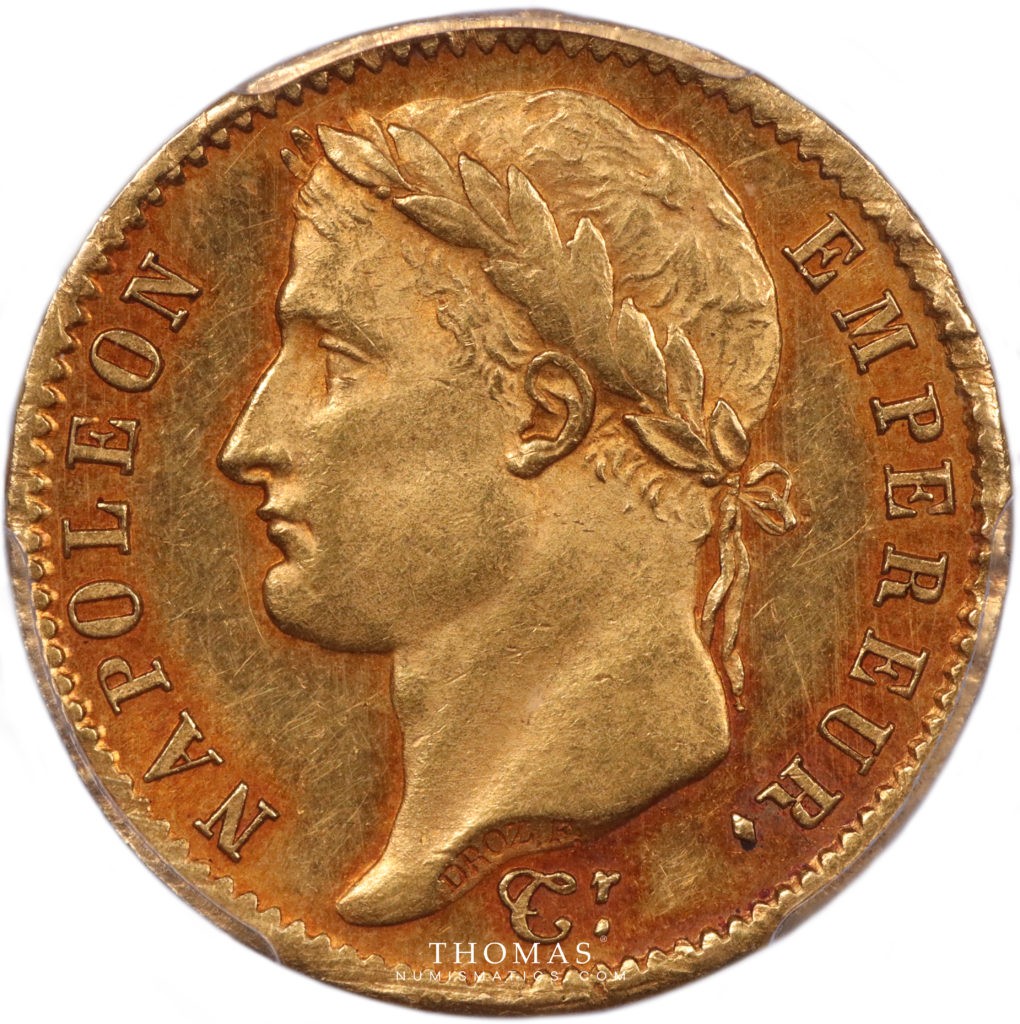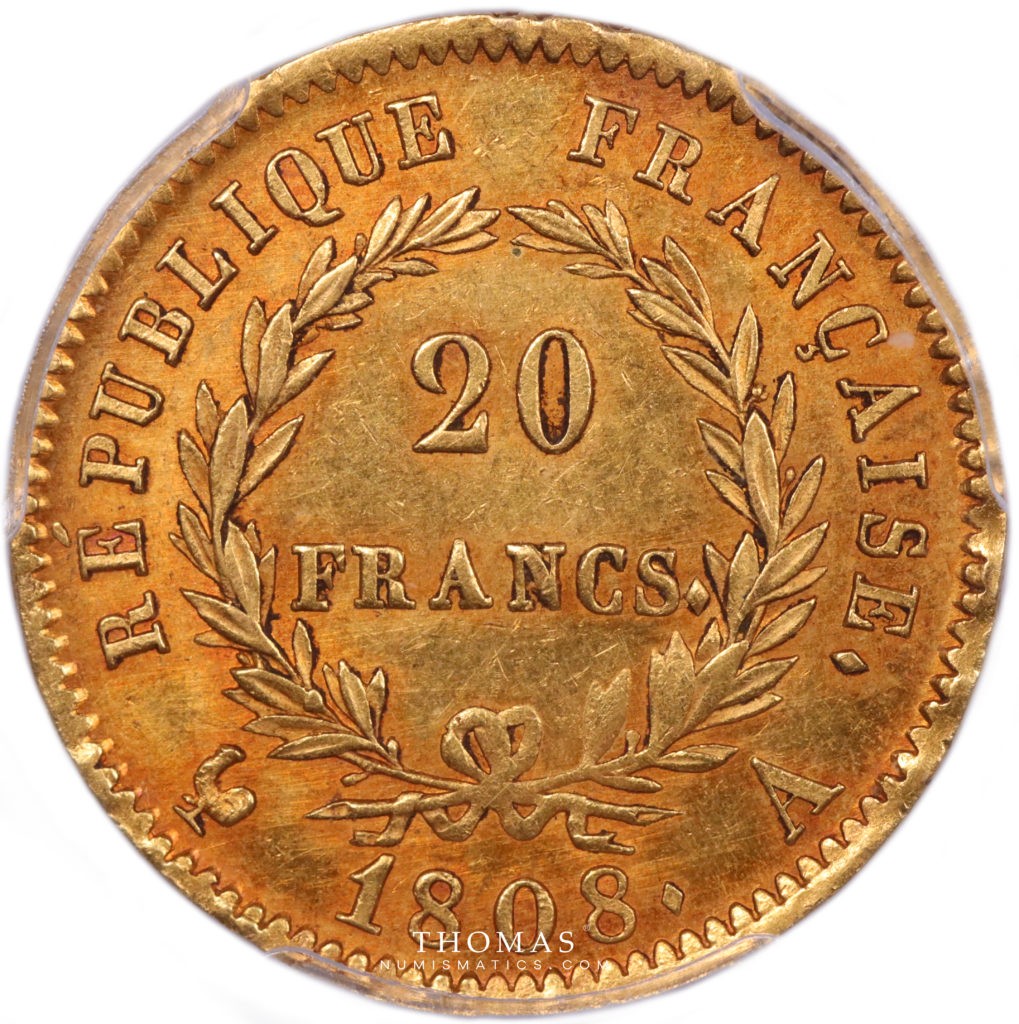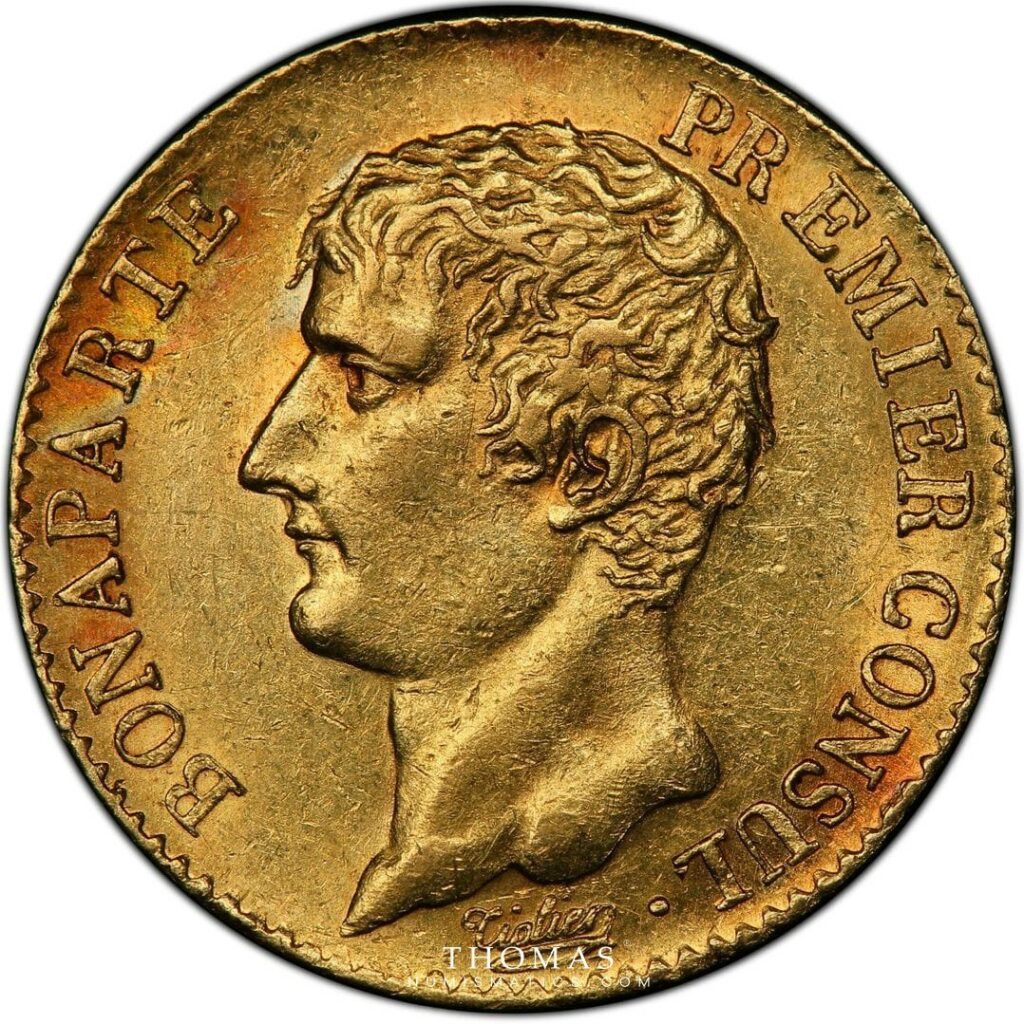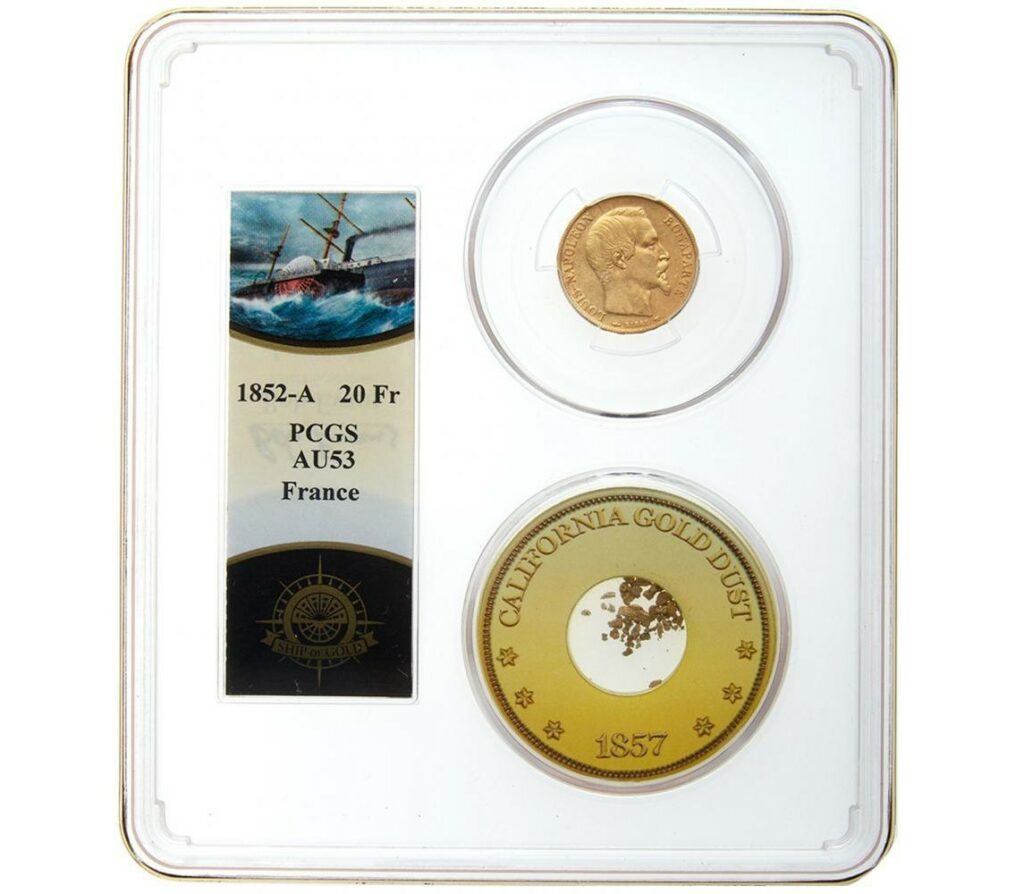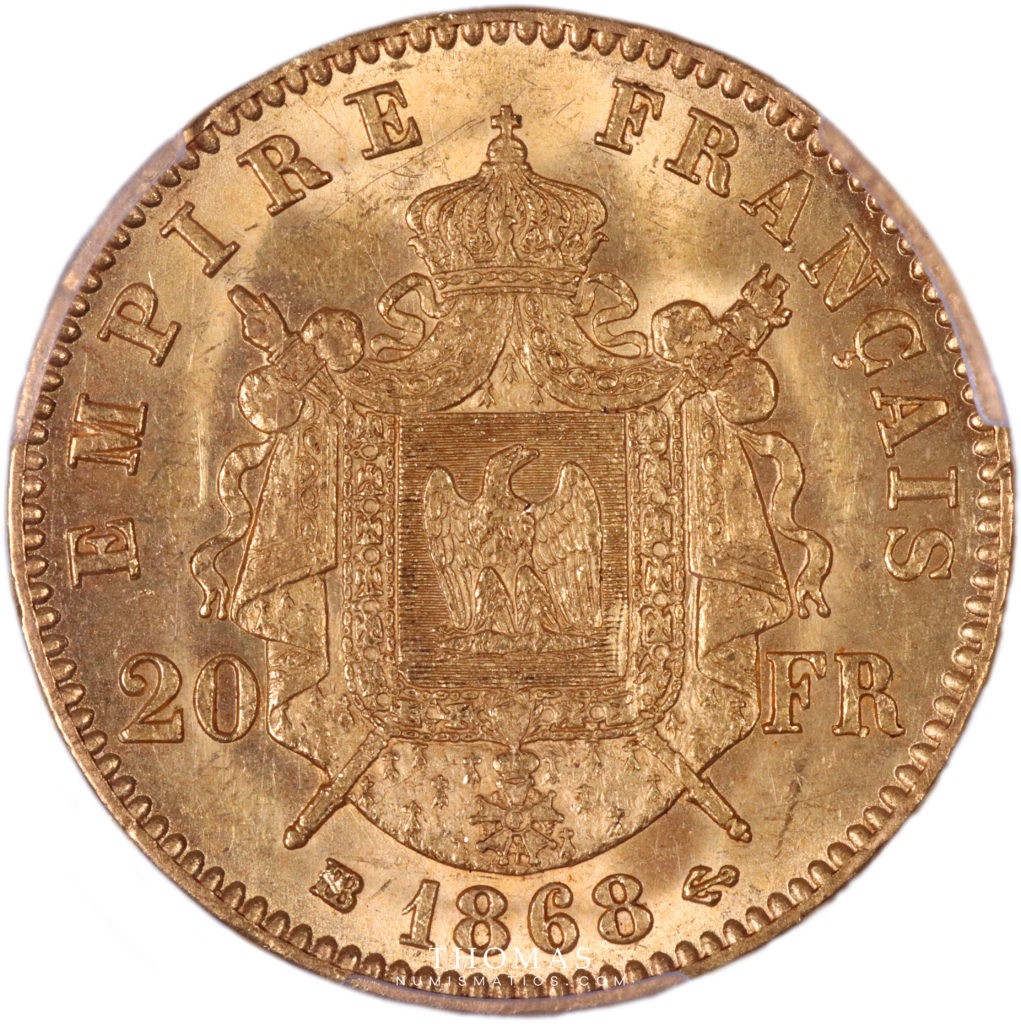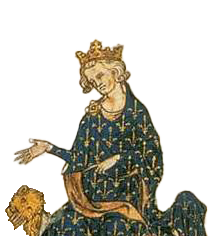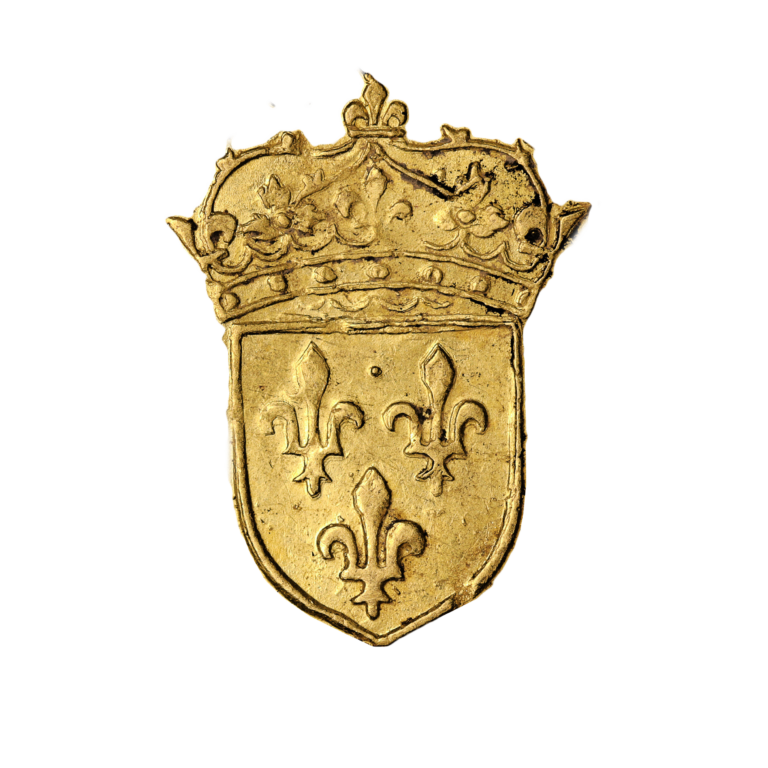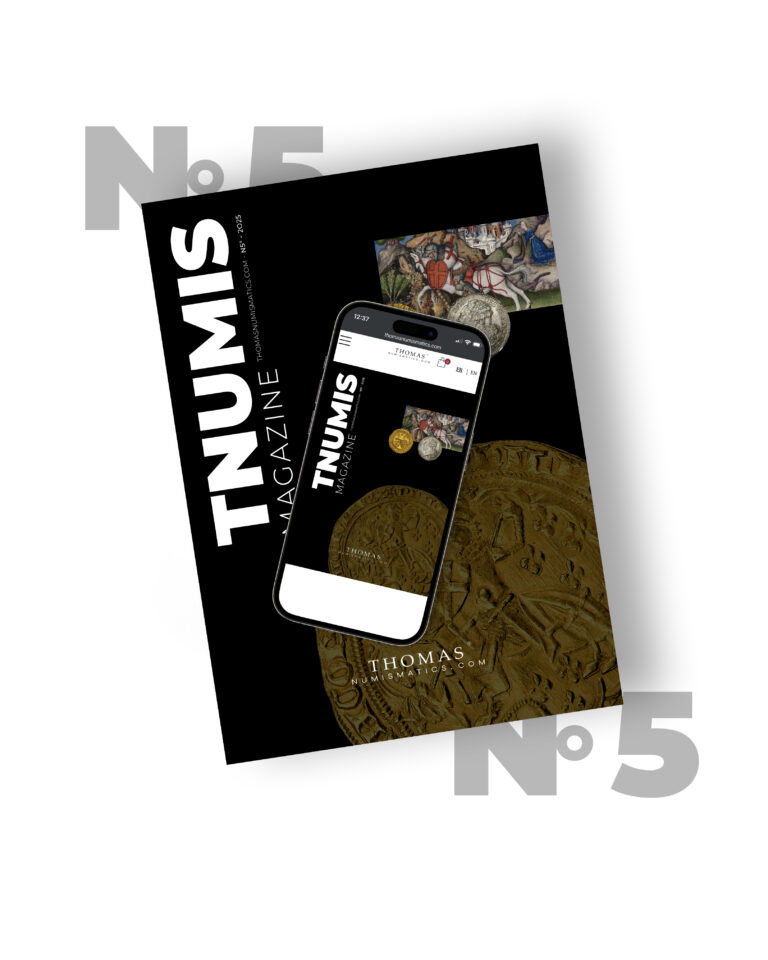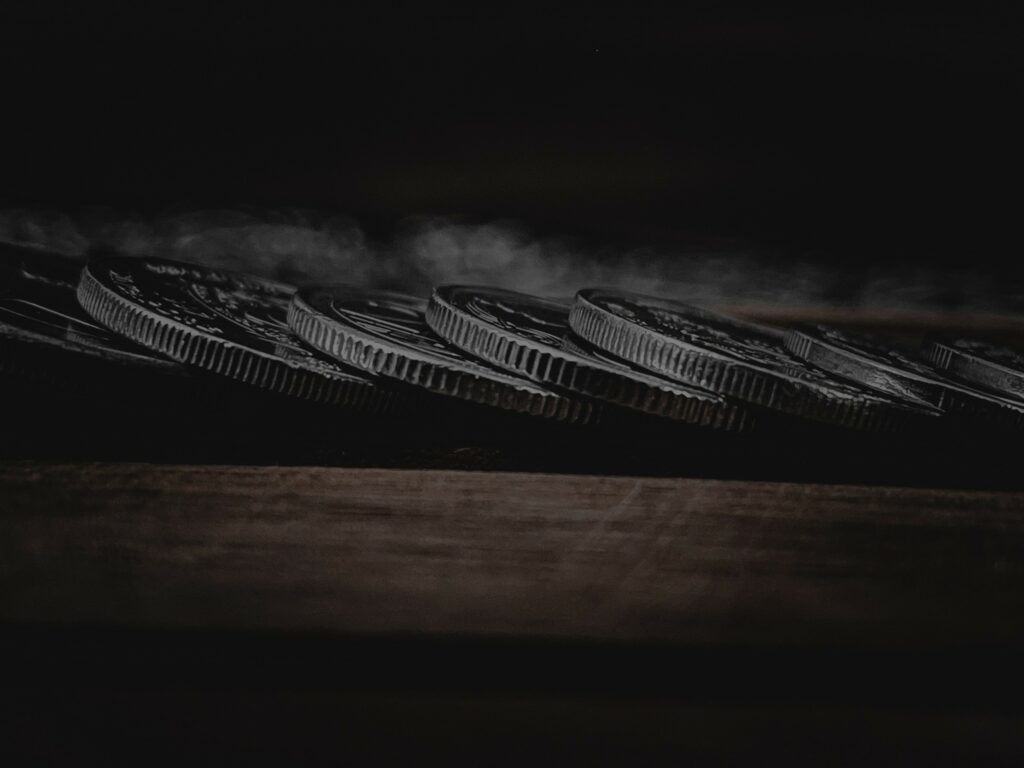
Discover all the news and articles from TNUMIS Magazine exclusively
20 Francs Napoleon Gold : History and Values
The 20 Francs Napoleon gold coin is one of the most emblematic French coins. It was first minted in 1803 by Napoleon I to replace the Louis d’or. Issued until the beginning of the First World War, it remains the witness of the political greatness and international power of France, especially under Napoleon III.
The history of the 20 Francs Napoleon
The Napoleon was created on March 28, 1803. It designates gold coins struck with a face value expressed in francs. It takes the name of its founder and is logically drawn in his effigy, just like the Louis d’or, on which were drawn the profiles of kings for decades. The most famous coin is the 20 francs Napoleon, but there are others, ranging from 5 to 100 francs.
It is sometimes erroneously referred to as Louis d’or. However, for the numismatists, the true Louis d’Or is a yellow metal coin, minted during the royalty, between 1640 and 1792. Napoleons are indeed part of this continuity, but they mark the end of royalty and the beginning of the Napoleonic Empire.
Just like the Louis d’Or, the Napoleon was the object of a political and economic reform. Its role was to stabilize and strengthen the currency. It was intended to build confidence and encourage early investments.
In contrast to the Louis d’or, its manufacture was strictly controlled. In the law of 7th of germinal year XI, various articles establish the exact characteristics of the new currency. While article 6 legalizes its manufacture, articles 7 and 8 provide details on its gold content, weight and measurements. The object weighs 6.45 grams with a titer of 900‰, or a pure gold weight of 5.81 grams. It measures 21 millimeters in diameter.
The 20 Francs Napoleon gold coin became, during the reign of Napoleon III, the emblem of the Latin Union. From 1865 on, it was the reference currency of the countries participating in the European monetary system. Other countries imitated the Napoleon for their own coins, such as Switzerland with the 20 Francs Vreneli or Italy, with the Marengo lira.
The manufacture of Napoleons lasted until 1914. They remain the witnesses of the political evolution of France between the 1st Empire and the beginning of the 1st World War. The Napoleons represent one of the most striking symbols of the monetary stability that France experienced in the 19th century. The weight, size and title never changed during this period. During these 111 years, an estimated 500 million 20 Francs gold coins were minted, representing 3,000 tons of gold.
The illustrations of the 20 Francs Napoleon coins
The obverse of the first Napoleon, struck in a little more than a million copies, was the effigy of “Bonaparte First Consul”. It became laureate from 1807 on. The obverse will then evolve over the regimes, bearing the profiles of Louis XVIII, Charles X, Louis-Philippe and Napoleon III. From 1871 on, the sovereigns gave way to the republican symbols with the Genie, which was also found on Napoleon coins struck between 1848 and 1849 (Second Republic), then with the Marianne. From 1849 to 1851, the Second Republic was symbolized by Ceres (Roman goddess of vegetation). In total, 19 different types of Napoleon’s effigy exist on the market.
The reverse sides also differ. The most frequent symbol is the laurel wreath with either the inscription “French Republic” or “French Empire” under Napoleon I and Napoleon III. On the edge is always noted “God protects France”, except under Louis XVIII and Charles X where the writing “Domine Salvum fac regem” replaces it.
The reverse of the Napoleon III type between 1861 and 1870 is unique. The engraver Jean Jacques Barre engraved an eagle spreading its wings in a coat of arms. It is embellished with the cross of knight of the legion of honor, the hand of justice, the scepter of Charlemagne and the imperial mantle decorated with bees. The whole is topped with the crown.
20 francs or Bonaparte Premier consul AN 12 A
PCGS AU 5820 francs or Napoléon III tête nue 1852 A
Trésor Naufrage Central America
PCGS AU 53Revers de 20 francs or Napoléon III
tête laurée 1868 BB
PCGS MS 62
Investment and collection of Napoleons 20 francs or
For all of these reasons, the 20 Francs Napoleon is valued today by investors. Numismatics reveals, once again here, all its strength. Indeed, if the value of some coins exceeds their intrinsic value, i.e. their weight in precious metal, Napoleons remain affordable coins, relatively easy to acquire. They are considered a safe haven in times of crisis and sought after for investment purposes. Thus, the price of the Napoleon varies according to the price of gold, but also its premium. It has certain peaks, especially in times of crisis.
Collection and investment
Beyond the safe haven, the 20 gold franc coins are highly prized by amateurs and collectors in search of rarity according to the vintages, the workshops and their provenance (treasures and pedigrees). The number of minted copies, as well as high quality even for current coins are highly sought-after criteria. Their value is then no longer indexed to the price of gold but to a real collectors’ market which varies according to supply and demand. A French monetary symbol, the 20 Napoleon gold francs remain a highly coveted collector’s investment internationally.
You wish to invest in 20 francs Napoleons? Do not hesitate to consult our store which regularly offers Napoleons for sale.
Sources :
Pièces-or
Au coffre
Achat or et argent
